Two Eras Overlap In These Two Italian Classics
Choices can be odd things. Too many, as on the toothpaste shelves of any supermarket, and people get confused. But narrow it down to two compelling items vying for the same approximate price, and that can fee even more daunting.
Both Maseratis shown here are being offered at no reserve in this month’s Gooding & Company Geared Online auction. Both have pre-sale estimates hovering near $100,000. The Maserati Bora used the same V8 engine as the Ghibli, but the Ghibli had it up front, while the Bora put it behind the driver.
Both cars appear to be restoration candidates, and restored versions go for more money. If you could have just one, all restored, which would you choose?
Ghibli: Faster Than Its Windstorm Namesake
“Ghibli,” a North African windstorm, has served as the name of three cars in Maserati’s history, including the automaker’s current midsize sport sedan, and, in the 1990s, a fast but blocky-looking coupe based on the BiTurbo model.
It is the first Ghibli, though, that collectors revere: the V8-powered GT built from 1967-1973. A true Italian masterpiece with design by Giorgetto Giugiaro, working for Ghia at the time, this high-speed GT could mesmerize with its design alone. Fortunately, there’s a wonderful performer within that the sleek steel body.
The Ghibli was not a competitor to Ferrari’s top sports cars of the period, the Ferrari 365 GTB/4 Daytona and Lamborghini Miura, but rather those automakers’ “everyday” GTs, the Ferrari 330/365 GTC and Lamborghini Islero.
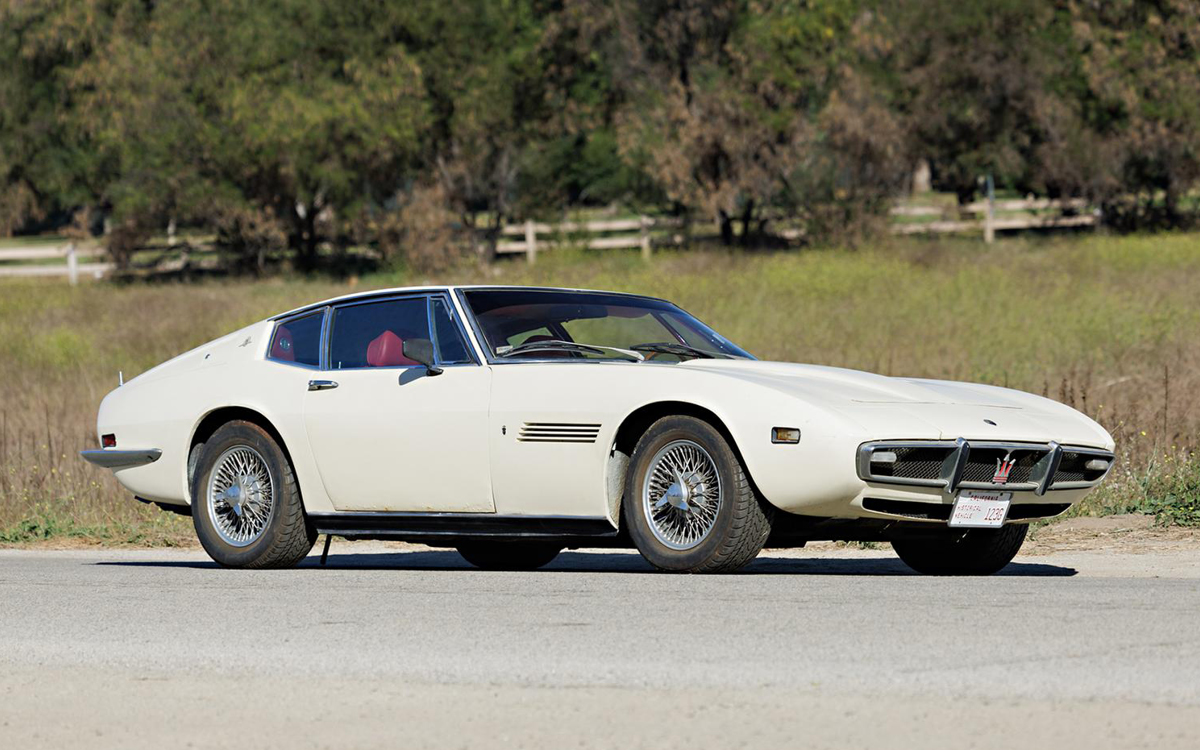
Art on Wheels
The Ghibli’s design blends sublimely subtle curves with the angular theme that would come to define some 1970s exotics. Giugiaro applied a pure fastback form on the Ghibli, with its roof being one exquisitely clean arc from the windshield header to the trunklid’s tip. Built from steel, the Ghibli coupe weighed about 3,600 pounds.
The 1967 Maserati Ghibli retailed for about $19,000 when new. Henry Ford II was reported to have bought the first one imported to America. Perhaps Mr. Ford admired the car’s fastback roofline, which was quite like that of the 1967-1968 Mustang. He might also have enjoyed the V8 exhaust tone that was closer to an American muscle car than to the V12s in Ferrari and Lamborghini models.
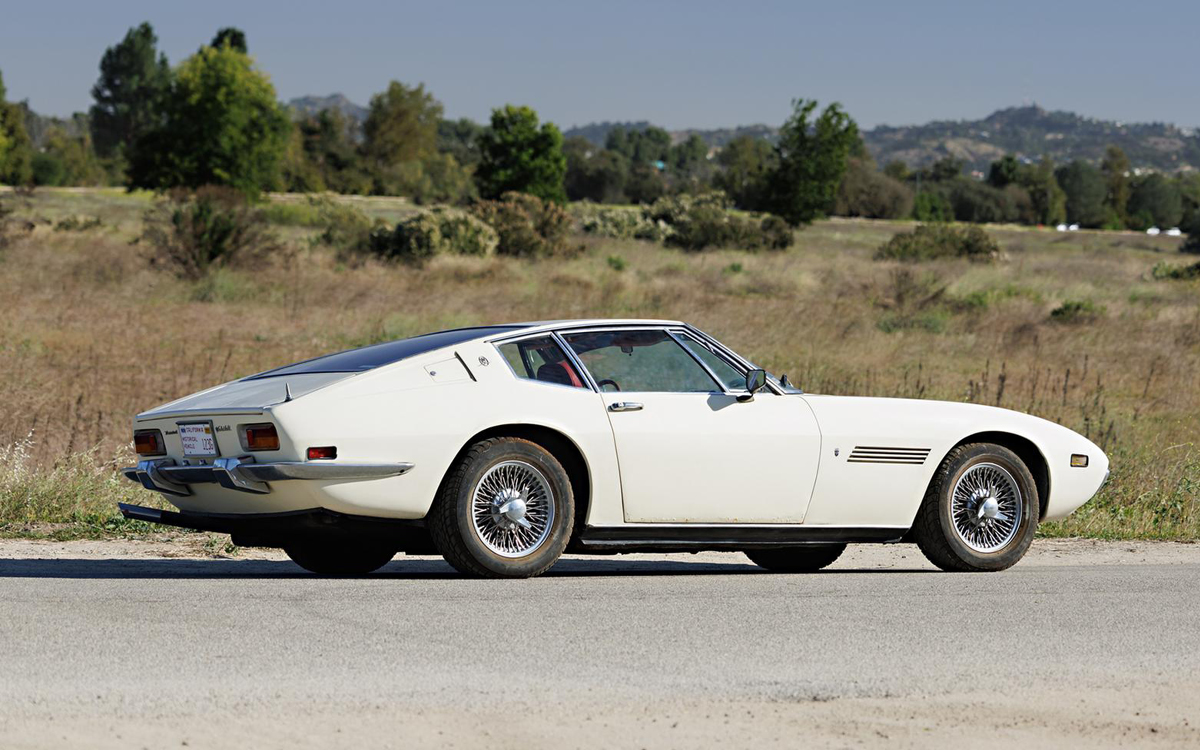
Maserati Muscle
Though the Ghibli’s 4.7-liter V8 might have issued a burbling exhaust note like a muscle car, the engine was far more exotic than the typical American pushrod V8s of the time. Descended from the Maserati racing engine of the 1950s, it employed aluminum construction, double overhead camshafts, dry-sump lubrication, and four twin-barrel Weber carburetors. All that added up to 310 horsepower, according to Maserati.
Like those big American V8s, though, the Maserati V8 made lots of torque, with 325 lb-ft. at a relatively low 4,000 rpm versus about 280 lb.-ft. for the Ferrari 330 GTC’s 4.0-liter V12. Car and Driver’s 1968 Ghibli road test recorded 0-60 in 6.4 seconds and the quarter-mile in 14.9 seconds at 97 mph, which was quite rapid for any type of car back then. Car and Driver indicated a 142-mph top speed.
Leaves of Steel
Most Ghiblis had the five-speed manual transmission. A three-speed automatic was available. In 1969, the Ghibli SS appeared with a 4.9-liter, 330-horse version of the engine and a reported top speed of around 160 mph. The Ghibli was like some American muscle cars also in its rear suspension, but that’s not much of a compliment. Thanks to a leaf-sprung solid rear axle, the Ghibli’s handling was agile but gave a rough ride through bumpy curves.
Maserati made just 1,170 Ghiblis. Of those, 125 were the Spider convertible, of which 25 were the more powerful Ghibli SS variety. The Ghibli offered by Gooding & Company has a pre-sale estimate of $100,000-$120,000 and is presented as an “unrestored example ideal for recommissioning or restoration.”
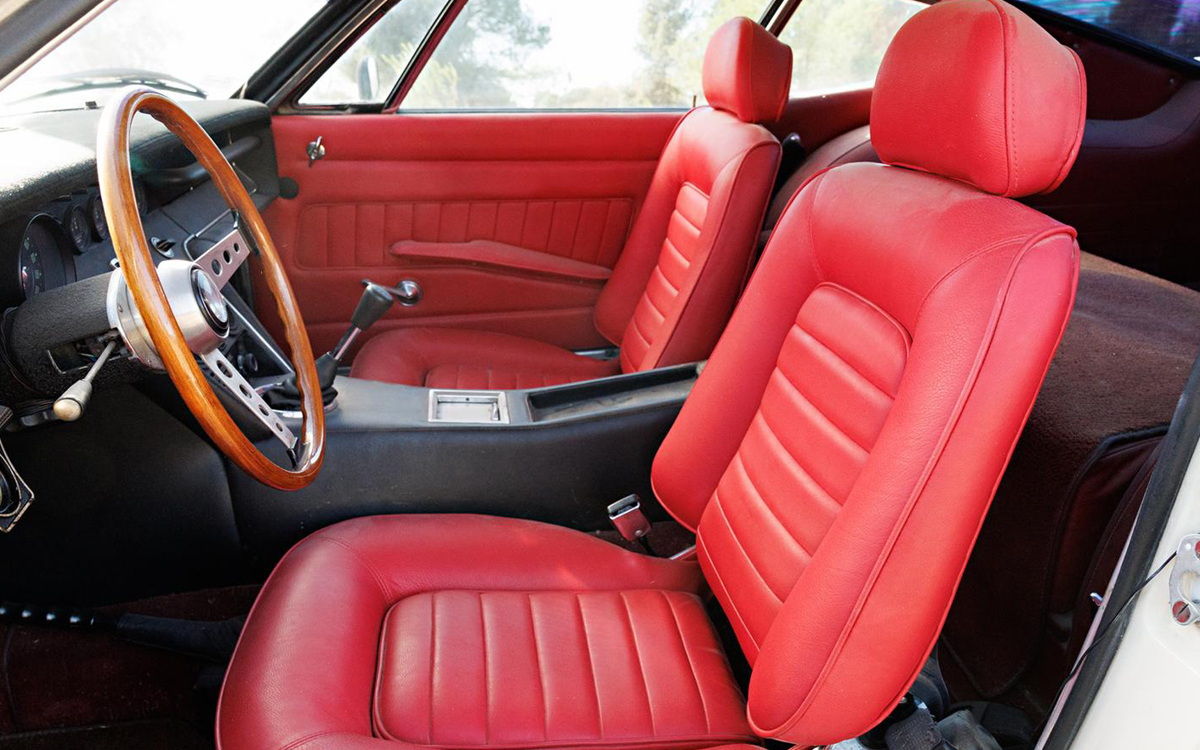
Bora: Maserati Aims for the Middle
No, we don’t mean middle of the road. We’re talking about middle of the car, which is where sports car makers were starting to put the engines by the late 1960s. Lamborghini did that for its stunning Miura supercar, while Ferrari made the V6-powered 206/246 Dino its first mid-engine road car.
Maserati aimed for a more daring flagship after France’s Citroën took control in 1968. The result was the 1971 Bora, which did not replace the Ghibli so much as augment it. Where the Lamborghini Miura was raw and raucous, the Maserati was more comfortable and refined and, according to contemporary road tests, a very stable high-speed handler. Bora production continued until 1978.
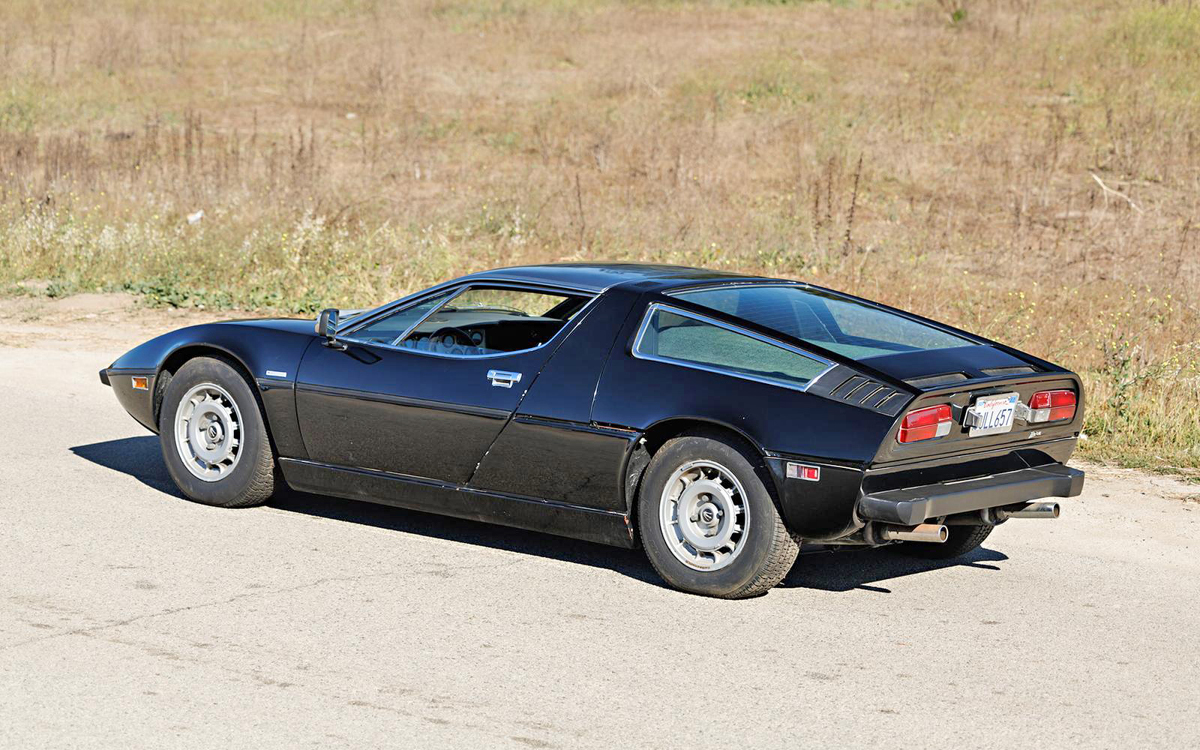
Designer Label
For the Bora’s design, Maserati again drew on Giugiaro’s talents, who by then was running his own design firm, Italdesign. He masterfully blended blade-like lines with subtle curves, this time creating a modernistic form that remained fresh looking for many years.
The Bora took its name from a type of cold, sometimes hurricane-force wind that blows off the Adriatic Sea. The new Maserati used a steel unitized structure, with steel body panels. The stainless-steel roof and A-pillars and glass-paneled fastback roofline were unique in the supercar segment. (The Maserati Merak was essentially a V6 version of the Bora, but with a roofline lacking the glass panels, along with a nearly useless“+2” back seat.)
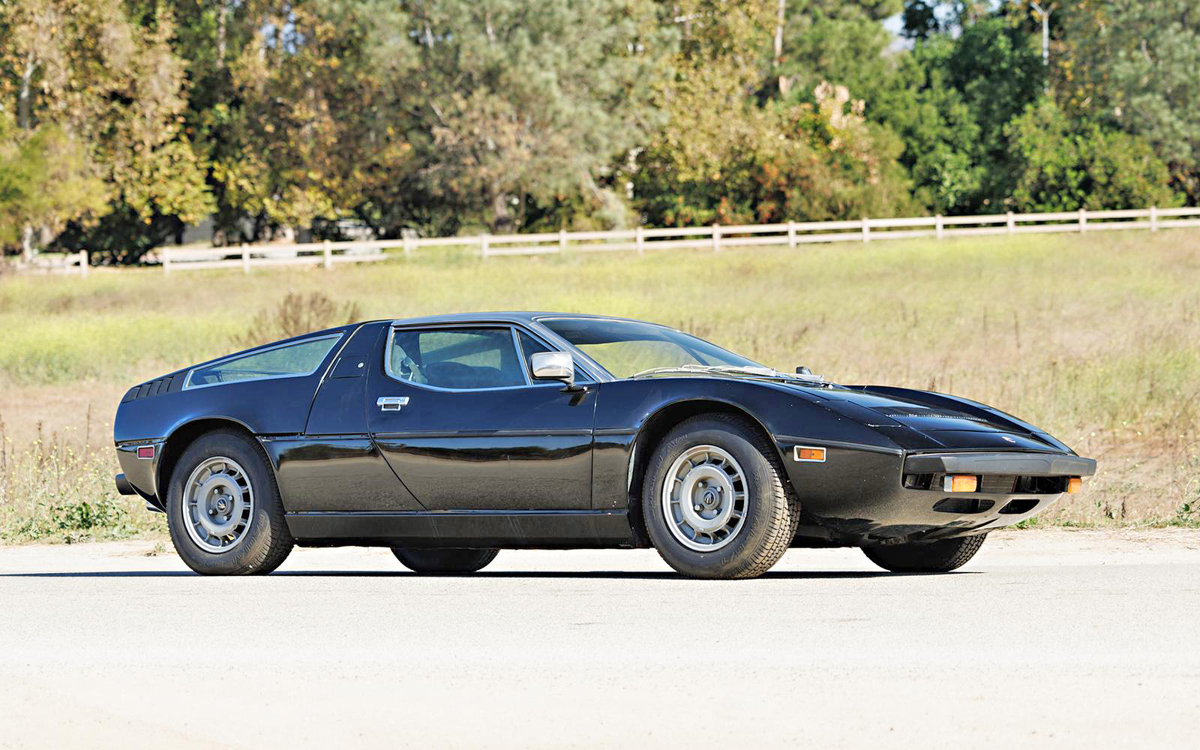
Eight Was Enough
For the Bora, Maserati repurposed its 4.7-liter V8 from the Ghibli, which would remain in production with the Bora for two years. The Bora came to the U.S. a few years later, when Maserati had upgraded the car to the 4.9-liter version. De-smogged to a still respectable 280 net horsepower and 339 lb-ft. of peak torque, the engine gave the Bora a performance character closer to the Ford V8-powered de Tomaso Pantera than the V8 models Ferrari would introduce in this period.
The sole Bora transmission was a ZF five-speed. Motor Trend clocked the 1974 Bora at 0-60 in 6.3 seconds and the quarter-mile in 14.5 seconds at 98.2 mph. Top speed approached 170 mph. Its price was a stiff-for-the-time $29,500.
Just 170 inches long and 45 inches high, the Bora weighed nearly 3,600 lbs., about the same as the Ghibli, so it was no lightweight. But it was agile, and auto media praised its ride and handling balance. Motor Trend’s road test declared, “About halfway through the first curve we realized we could have taken it half-again as fast, because the Bora sticks without the twitchiness of other mid-engine cars, most of which are a hair-raising handful to control at anything near their limits.”
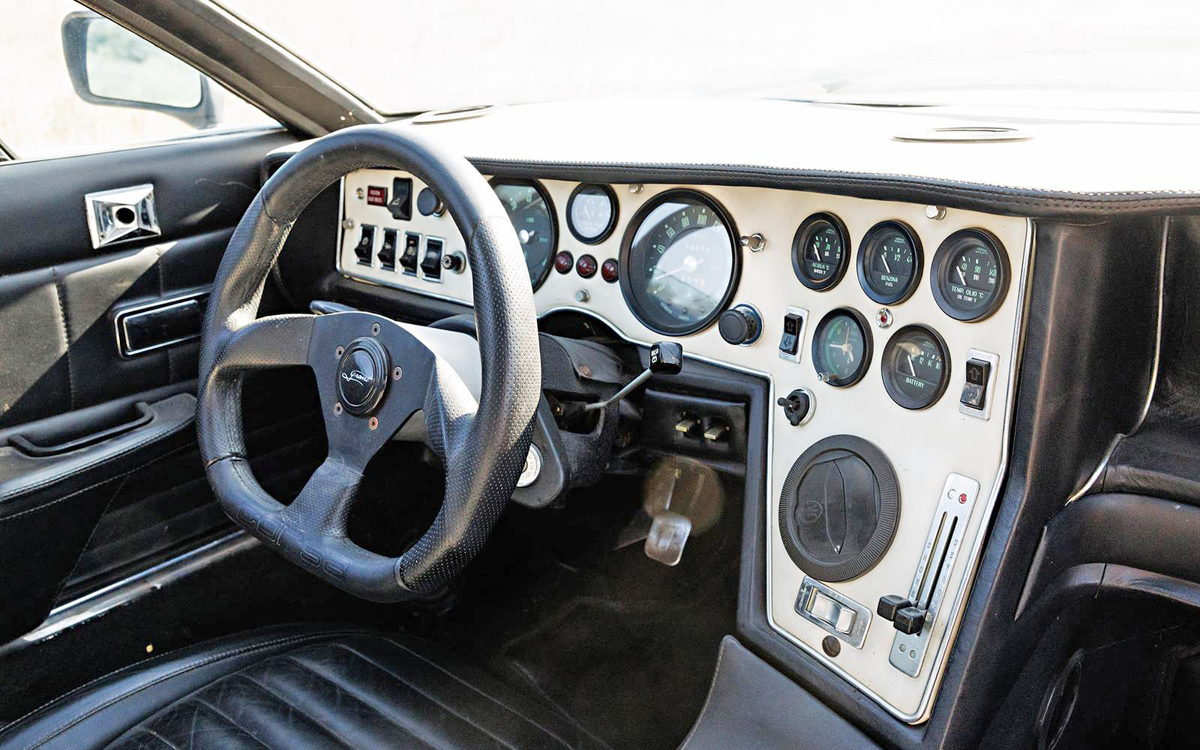
French-Italian Cooking
Hydraulic assist technology came from Citroën, but only for braking and for operating the headlight doors, driver’s seat height, and the adjustable pedals. Unlike the Maserati-powered Citroen SM, however, the Bora did not use Citroën’s hydropneumatic suspension and steering.
About half of the 560 or so Boras made were exported to the U.S., Maserati’s largest market. The Maserati Bora offered by Gooding & Company is an original U.S.-market car, completed on January 27, 1975 and delivered new to Los Angeles. The car has a pre-sale estimate of $80,000-$100,000. The catch? This car is a restoration candidate. Its original Maserati engine is included with the sale, but the car currently runs with a Chevy V8 installed. Who wouldn’t want both glorious Maseratis in their garage? But if it came down to choosing one, where would your money go?


